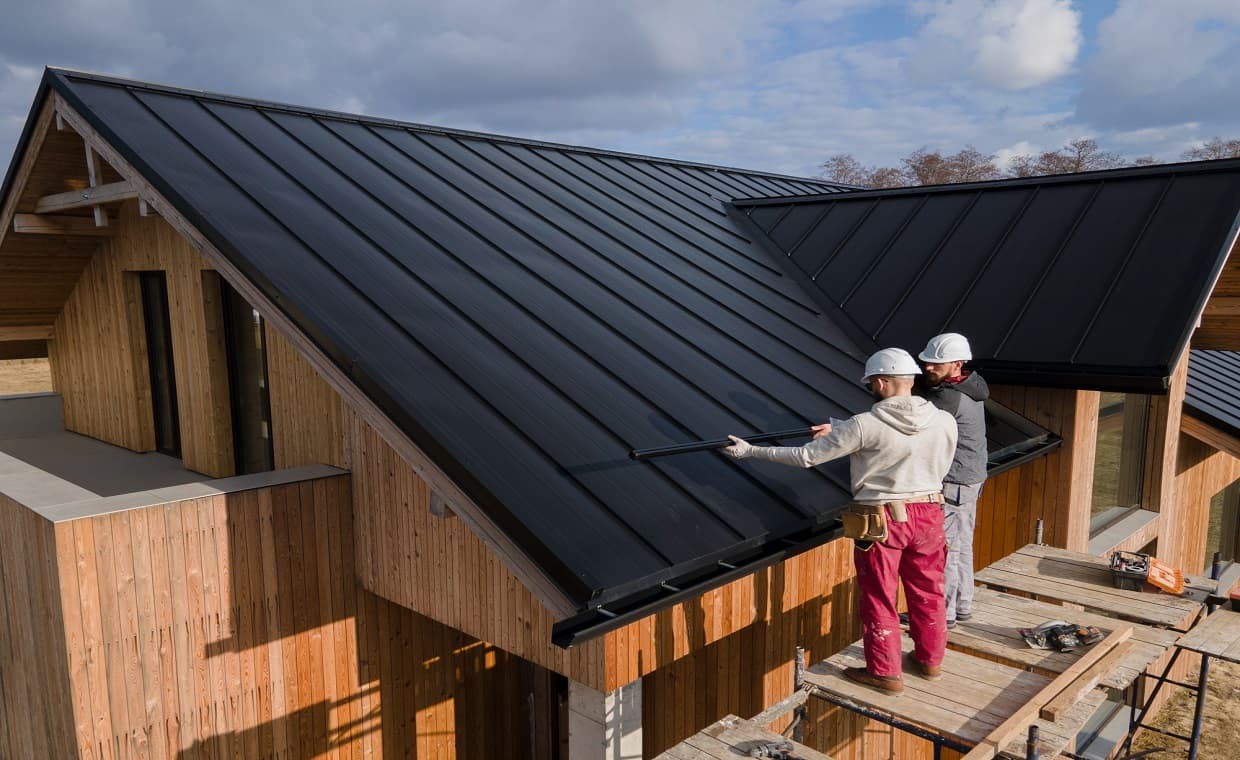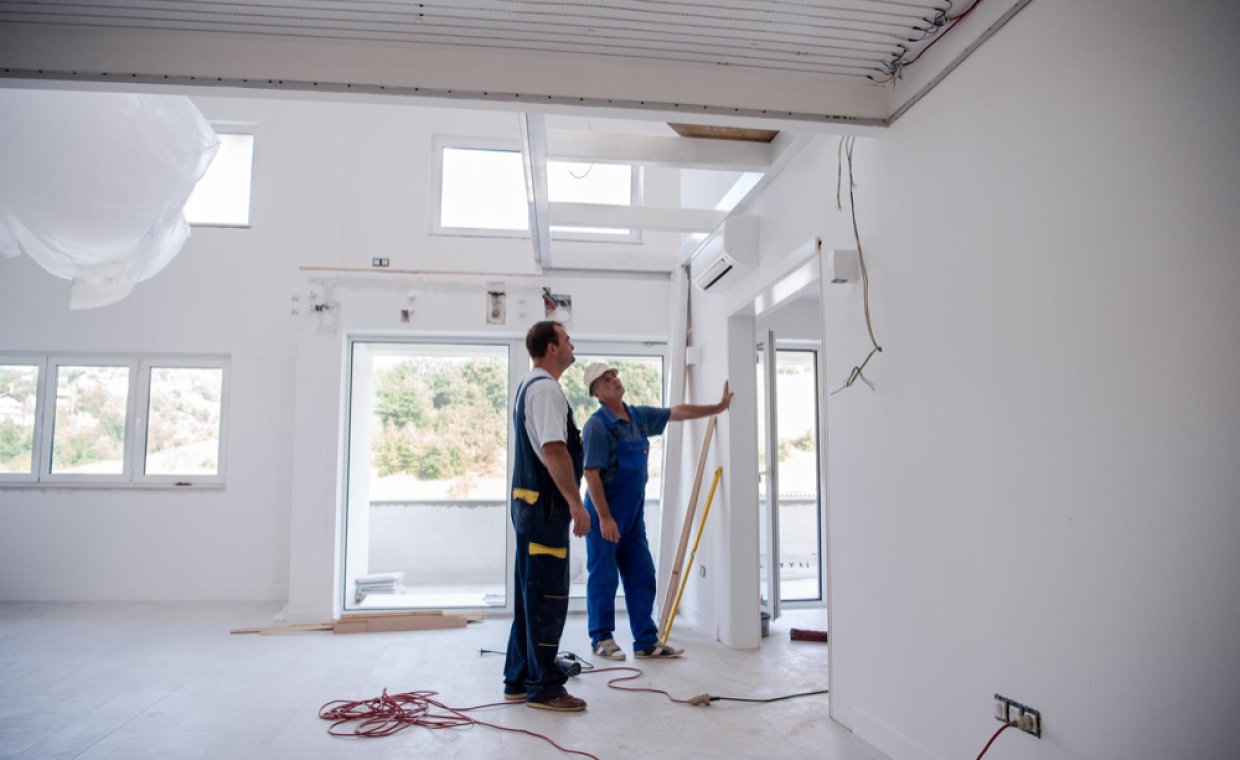
Table of Contents
Quick Summary
- Shows how early planning and roof mapping prevent long-term problems.
- Explains selecting shingles, metal panels, and flashing for style and durability.
- Covers proper underlayment, starter strips, and secure nailing for storm resistance.
- Details balanced attic ventilation to control heat, moisture, and mold.
- Offers leak-detection tips and when to repair versus replace.
- Highlights correct gutter sizing, guards, and drip edges to manage water flow.
- Lists seasonal maintenance tasks to extend roof life and avoid costly damage.
- Recommends professional inspections every other year for lasting performance.
Homes don’t fail from one big mistake. They fail from a hundred tiny shortcuts that slowly add up. The roof is the best place to see that. I’ve seen beautiful homes with worn-out shingles, gutters that don’t work right, and vents that appear like they were added on later. It’s easy to learn: a roof is more than just protection from the elements. It’s a system that needs design, planning, and care long before the first nail hits a shingle.
If you’re in Franklin and your roof is due for a reality check, talk to local roofers who walk roofs every day and know the quirks of your streets, your wind patterns, your trees. Local experience keeps you from buying the wrong shingle blend, skipping ice and water shield in a tricky valley, or choosing a vent that whistles like a kettle at 2 a.m. The right crew will translate your house’s personality into materials and details that actually fit.
Design Starts with The Map of Your Roof
Draw a map of the roof before you choose colors. There is a work for ridges, valleys, hips, dormers, penetrations, gutters, and drip edges. Where does water want to go when a storm hits sideways? Where does debris settle after a windy day? Design answers those questions.
Think about the look as much as the load. Low slope sections call for different assemblies than steep gables. A farmhouse profile can look great with a standing seam metal ridge, while a craftsman bungalow might look great with laminated architectural shingles that fit like a glove. Flashing is also an element of the look. Clean step flashing lines around chimneys and walls make the roof look intentional, not patched together.
Quick design ideas to consider
- Color that complements brick tone, not just paint
- Ridge vents that align with the roof’s horizon line
- Balanced overhangs to protect siding and window heads
- Hidden fasteners on metal profiles where possible
Build For the Storm You Will Actually Get
Franklin’s weather can be moody. One weekend is perfectly still; the next throws branches and rain sideways. Build for that next weekend. Underlayment is not a line item to cheap out on. A high temperature ice and water membrane in valleys and along eaves saves ceilings and sanity. Starter strips at eaves and rakes prevent wind uplift. Proper nailing patterns are not negotiable.
Ventilation is the quiet hero. Without it, heat and moisture cook the attic, curl the shingles, feed mold, and turn winter frost into water stains. Balance intake at the soffits with exhaust at the ridge. If your soffits are painted shut or clogged with insulation, fix that first. A beautiful roof with a suffocated attic is a slow-motion failure.
Durability checklist
- Ice and water at eaves, valleys, and penetrations
- Starter and hip ridge components matched to the shingle line
- Balanced attic ventilation measured by net free area
- Drip edge that actually directs water into the gutter, not behind it
Repair Is an Art of Reading the Roof
Most leaks don’t start where you see the stain on the ceiling. Water travels. A good repair tech reads the roof like a detective novel. Granule loss on the upslope side of a valley, a hairline crack in a boot around a vent stack, a missed nail head that finally rusted through, or a flashing tab that lifted under a cap shingle. The fix is rarely a blob of mastic. It’s a small rebuild with the right sequence.
If your roof is under ten years old and leaking, push for a surgical repair. Replace the failed piece and the first course around it, then rework the flashing so the water path makes sense. If the roof is two decades old and shedding granules like confetti, it’s time to plan the replacement. Repairs become bandages on a jacket that has lost its weave.
Make Style Earn Its Keep
Yes, pick a color that makes your house pop at golden hour. Also make it earn its keep in summer heat and storm season. Reflective shingle blends reduce attic temperature. Heavier laminated profiles resist wind better and disguise repairs later. Metal on porch accents or low slope connectors can give a tailored look and shed water fast. If you love cedar, consider engineered shakes that keep the texture without the frantic maintenance schedule.
Gutters and downspouts are part of the look. Undersized runs make dramatic waterfalls in every thunderstorm and carve channels in landscaping. A clean five inch system with proper hangers and a gentle pitch is often fine; go six inch under big roof planes or heavy leaf drop. Add guards that suit your trees, not a TV commercial. Pine needles and oaks ask for different solutions.
Maintenance That Actually Matters
Seasonal care is not glamorous, but it is cheaper than drywall repair and attic insulation replacements. A simple rhythm keeps things tight.
- Clear valleys and gutters after leaf drops and big wind events
- Re caulk exposed nail heads on accessories at the end of winter
- Trim branches that can rake shingles during storms
- Look for shingle tabs that lifted after hot spells and reset them
- Photograph the roof from the same angles twice a year to spot changes
Call in a pro every other year for a full walk. They will probe soft sheathing near chimneys, check vent boots for UV cracking, and test flashing laps. You get a short punch list and a roof that quietly does its job while you live your life.
The Quiet Confidence of a Good Roof
A good roof is the part of home design that disappears into the background. Rain hits, gutters gurgle, and inside you hear nothing. The attic smells like wood, not mildew. The ceilings stay clean. The exterior lines feel composed from the street. That calm is not an accident. It’s design, materials, and craft work moving in the same direction.
Start with a sketch. Walk the perimeter after storms. Ask better questions about underlayment and ventilation. Team up with people who work in your neighborhoods and speak the language of your roof. Do that, and when the next storm rolls over Franklin, you’ll sip your coffee and barely notice.
Also Read: How Roofing Takeoff Software Is Changing the Way Contractors Estimate Projects
FAQs: Roofing Maintenance Guide
1. Why is a roofing maintenance guide important?
It helps homeowners prevent leaks, improve energy efficiency, and avoid costly repairs.
2. How often should a roof be inspected?
Check visually after major storms and schedule a professional inspection every two years.
3. What is the most effective underlayment for severe weather?
High-temperature ice-and-water membranes along eaves and valleys offer the best protection.
4. When is roof replacement better than repair?
If shingles are brittle, losing granules, or the roof is 20+ years old, replacement is usually smarter.
5. How can attic ventilation extend roof life?
Balanced intake and exhaust reduce heat buildup, moisture, and mold, keeping shingles and framing sound.






























